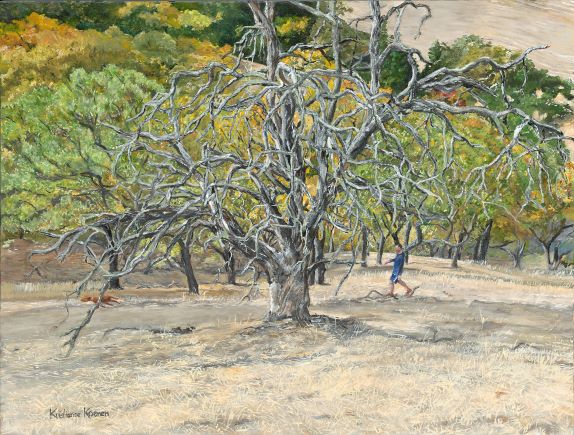
ABOUT GICLÉES
Why Giclées?
When I finished my first painting, Central Park Winter, in 2006, I brought it to a local framer, who told me she did not think it was a good idea for her to frame it until I had a giclée of that painting made. “What’s a giclée?” I asked.
Since that conversation, I have made giclées of my paintings. I want those who buy my paintings to know they have a reproduction that accurately captures the original and that they will be able to enjoy for many years. Giclées allow me to offer high quality, long-lasting reproductions of my works for sale at a fraction of the cost of the original.
What are Giclées?
A giclée (pronounced “zhe-clay”) is a type of print created from a digitized image of the original. Giclées should not be confused with prints of digital pictures that are produced at home or by commercial printers. Ordinary prints almost always poorly reproduce the colors, hues and highlights of a work of fine art and begin to fade and discolor after a few years. Giclées are of much higher quality, are true to the original and, with ordinary care, will keep their color, hue, tone, and vibrancy for decades.
The Giclée Process
- My giclées are made by an independent business in the San Francisco Bay Area that specializes in creating fine art giclées.
- The original painting is photographed using a high-mega pixel digital camera. The resulting digital image is adjusted to match the original painting and a test proof is made.
- I personally inspect each proof to determine if it captures the original to my satisfaction and have adjustments made where I think appropriate. I am quite particular about this!
- Once I approve the proof, the giclée is printed with a large format printer using high quality inks that have been tested to resist fading and discoloration for 60 years. Giclées of my oil paintings are printed on archival-quality canvas stretched to the size the customer has ordered. Giclées of my pastels are printed on archival 100% cotton fiber, acid and lignin-free paper to resist fading.
These pictures show the result of the giclée process. One of these is the original oil painting, the other is a giclée made of that painting. (Hint — the original oil painting is on the left.)
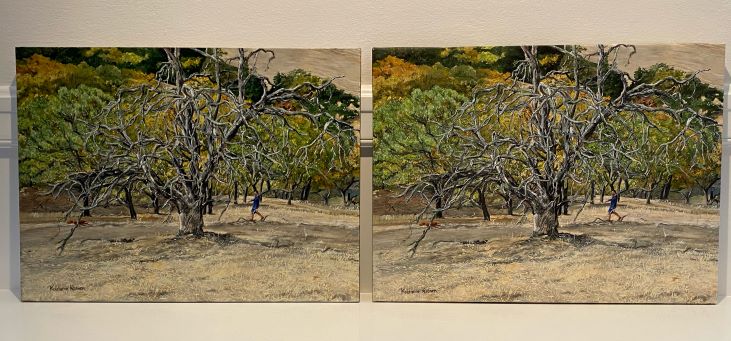
Certifications
I include with each giclée a Certificate of Authenticity attesting that it was made from my original. I also include a technical specification card that describes the process by which the giclée was made.
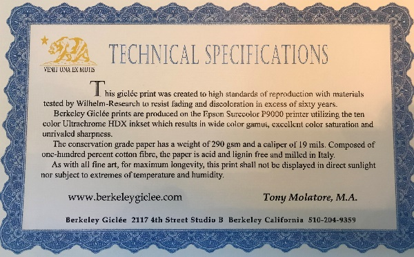
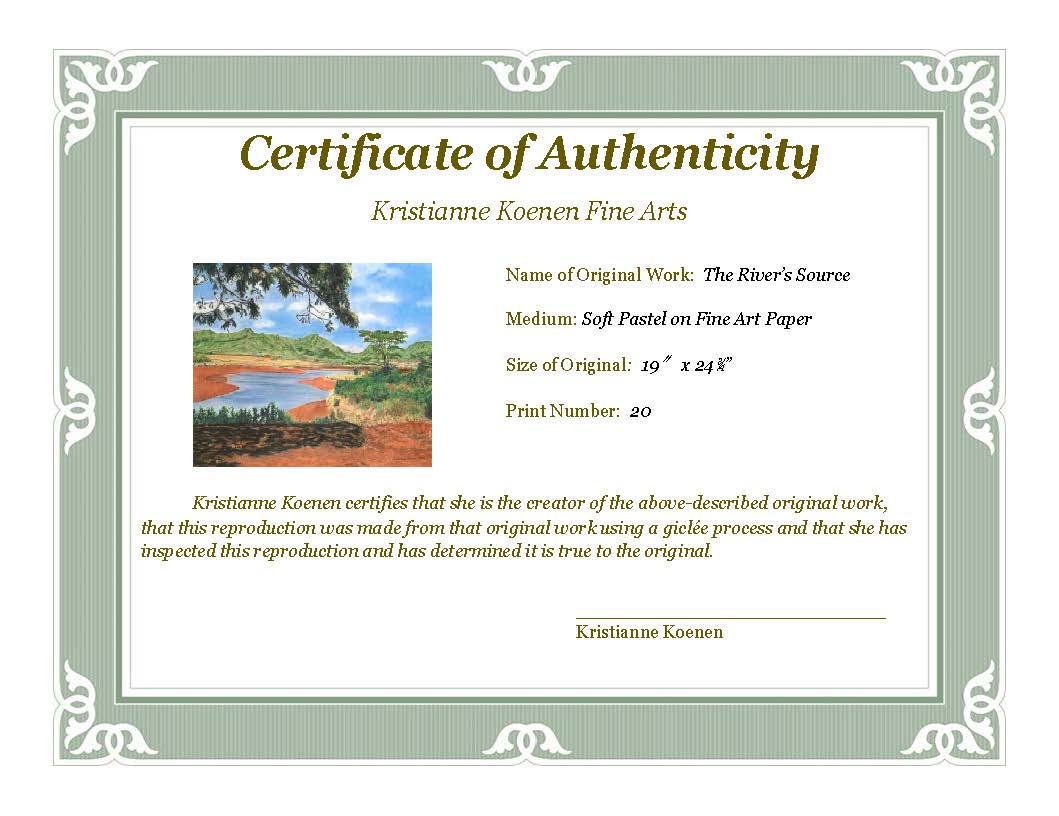
Framing Your Giclée
Although a giclée of an oil painting or acrylic can be hung without a frame by placing eye hooks and a wire in the back of the canvas support, the artwork is greatly enhanced by framing it. I like to choose frames that are simple, elegant, and timeless, without competing with the artwork.
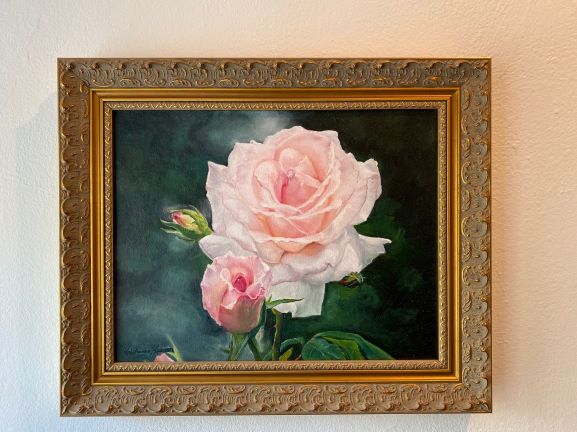
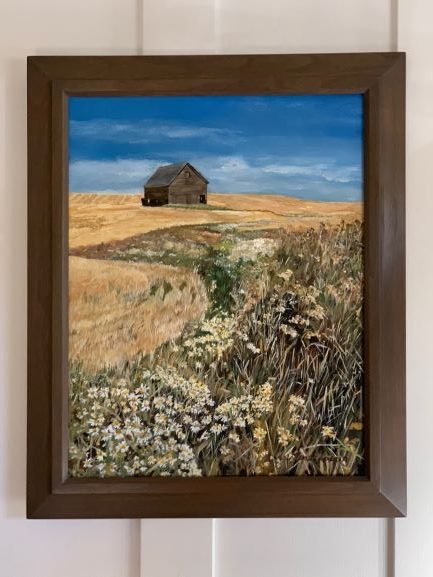
A giclée of an original pastel will require glass and a frame. I prefer museum quality glass because it minimizes reflection and has superior clarity.
You may wish to place a mat around the work inside the frame. Using a mat will make the framed piece larger, which may be desirable depending upon wall size. Here are examples of two framed pastels, one with a mat and one without.
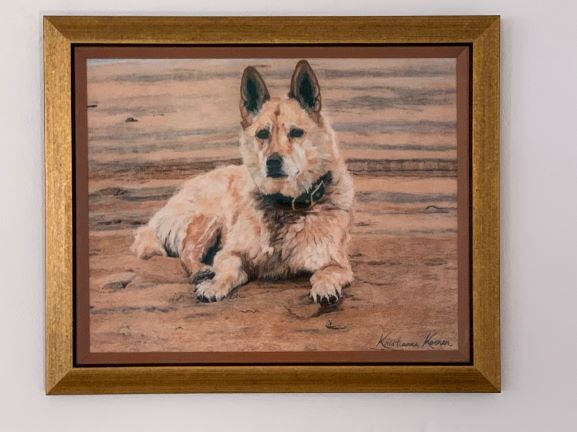
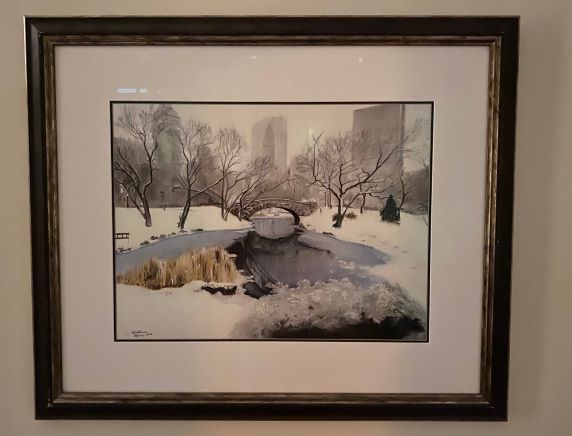
Caring for Your Giclée
The guidelines for caring for giclées are the same as for original paintings. There are many good resources on the internet that discuss how to care for paintings, such as the Smithsonian Museum Conservation Institute’s guide, which you can find here.
Here are some general principles I recommend you follow in caring for your giclée:
- Never lean the front or back surface of your giclée on a pointed or sharp object, such as a chair or the corner of a wall mirror. This will dent a giclée that is on stretched canvas and can scratch the paper of a framed giclée of a pastel painting.
- Although my giclées are printed with inks designed to resist fading, prolonged exposure to direct sunlight will cause the colors to fade much more quickly, just as with originals. You should carefully evaluate the amount of sun exposure a wall receives when deciding where to hang your giclée.
- You should not place your giclée in an area where it will be exposed to heat, cold, smoke or humidity as this can cause fading, discoloration and other damage. Examples of places to avoid keeping a giclée are over a heating vent, near a fireplace or in a non-climate-controlled sunporch or shed.
- You should dust a giclée that is on stretched canvas periodically to keep its appearance, using a soft dry cloth. Do not use dusting or cleaning sprays or liquids. For giclées with framing glass, I recommend you place the giclée on a flat surface before cleaning, apply a non-ammonia glass cleaner on a soft lint-free cloth and then gently clean and dry the glass with the cloth. You should not spray the cleaner directly onto the glass as the cleaner may leak through to the giclée.